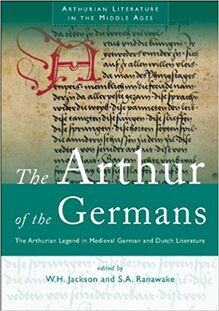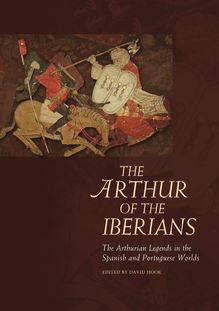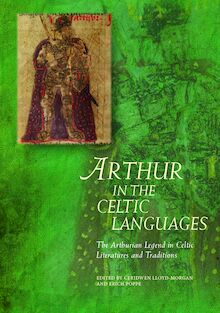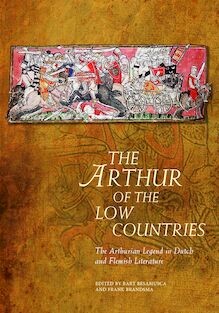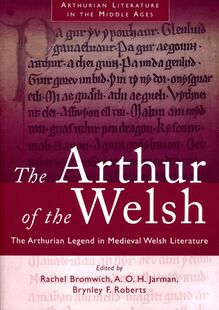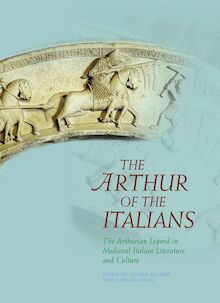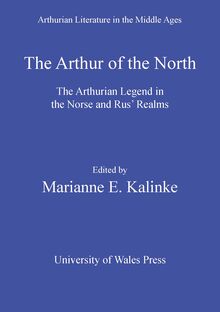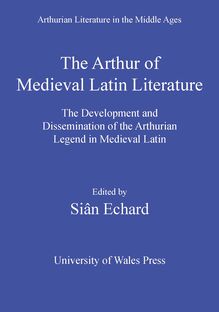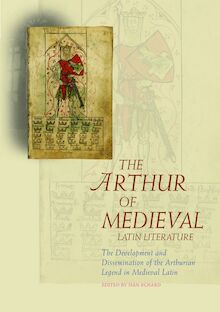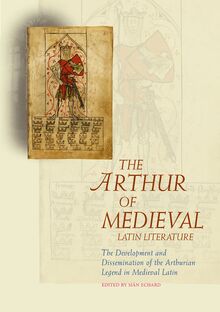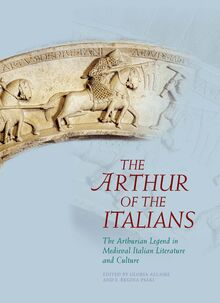-
 Univers
Univers
-
 Ebooks
Ebooks
-
 Livres audio
Livres audio
-
 Presse
Presse
-
 Podcasts
Podcasts
-
 BD
BD
-
 Documents
Documents
-
- Cours
- Révisions
- Ressources pédagogiques
- Sciences de l’éducation
- Manuels scolaires
- Langues
- Travaux de classe
- Annales de BEP
- Etudes supérieures
- Maternelle et primaire
- Fiches de lecture
- Orientation scolaire
- Méthodologie
- Corrigés de devoir
- Annales d’examens et concours
- Annales du bac
- Annales du brevet
- Rapports de stage
La lecture à portée de main
Vous pourrez modifier la taille du texte de cet ouvrage
Découvre YouScribe en t'inscrivant gratuitement
Je m'inscrisDécouvre YouScribe en t'inscrivant gratuitement
Je m'inscrisEn savoir plus
Vous pourrez modifier la taille du texte de cet ouvrage
En savoir plus

Description
The Arthur of the North is the first book-length study of the Arthurian literature that was translated from French and Latin into Old Norse-Icelandic in the thirteenth century, which has been preserved mostly in Icelandic manuscripts, and which in early modern times inspired the composition of narrative poems and chapbooks in Denmark, Iceland and Norway, chiefly of the Tristan legend. The importation of Arthurian literature in the North, primarily French romances and lais, is indebted largely to the efforts of King Hákon Hákonarson (r. 1217–63) of Norway, who commissioned the translation of Thomas de Bretagne’s Tristan in 1226, and subsequently several Arthurian romances by Chrétien de Troyes and a number of Breton lais. The translations are unique in that the French metrical narratives were rendered in prose, the traditional form of narrative in the North. The book concludes with a chapter on Arthurian literature in the Rus’ area, precisely East Slavic, with a focus on the Belarusian Trysčan.
1 The Introduction of the Arthurian Legend in Scandinavia
Marianne E. Kalinke
2 Sources, Translations, Redactions, Manuscript Transmission
Marianne E. Kalinke
3 Breta sögur and Merlínússpá
Stefanie Gropper
4 The Tristan Legend
Geraldine Barnes
5 The Translated Lais
Carolyne Larrington
6 The Old Norse-Icelandic Transmission of Chrétien de Troyes’s Romances:Ívens saga, Erex saga, Parcevals saga with Valvens þáttr
Claudia Bornholdt
7 The Old Swedish Hærra Ivan Leons riddare
William Layher
8 Arthurian Echoes in Indigenous Icelandic Sagas
Marianne E. Kalinke
9 Arthurian Ballads, rímur, Chapbooks and Folktales
M. J. Driscoll
10 Arthurian Literature in East Slavic
Susana Torres Prieto
Sujets
Informations
| Publié par | University of Wales Press |
| Date de parution | 20 novembre 2015 |
| Nombre de lectures | 0 |
| EAN13 | 9781783164554 |
| Langue | English |
Informations légales : prix de location à la page 0,1500€. Cette information est donnée uniquement à titre indicatif conformément à la législation en vigueur.
Extrait
THE ARTHUR OF THE NORTH
ARTHURIAN LITERATURE IN THE MIDDLE AGES
V
THE ARTHUR OF THE NORTH
THE ARTHURIAN LEGEND IN THE NORSE AND RUS REALMS
edited by
Marianne E. Kalinke
CARDIFF UNIVERSITY OF WALES PRESS 2011
The Vinaver Trust, 2011
All rights reserved. No part of this book may be reproduced in any material form (including photocopying or storing it in any medium by electronic means and whether or not transiently or incidentally to some other use of this publication) without the written permission of the copyright owner except in accordance with the provisions of the Copyright, Designs and Patents Act 1988. Applications for the copyright owner s written permission to reproduce any part of this publication should be addressed to The University of Wales Press, 10 Columbus Walk, Brigantine Place, Cardiff, CF10 4UP.
www.uwp.co.uk
British Library Cataloguing-in-Publication Data. A catalogue record for this book is available from the British Library.
ISBN 978-0-7083-2353-3 e-ISBN 978-1-78316-455-4
The right of the Contributors to be identified separately as authors of this work has been asserted by them in accordance with sections 77, 78 and 79 of the Copyright, Designs and Patents Act 1988.
PUBLISHED IN COOPERATION WITH
THE VINAVER TRUST
The Vinaver Trust was established by the British Branch of the International Arthurian Society to commemorate a greatly respected colleague and a distinguished scholar
Eug ne Vinaver
the editor of Malory s Morte Darthur . The Trust aims to advance study of Arthurian literature in all languages by planning and encouraging research projects in the field, and by aiding publication of the resultant studies.
ARTHURIAN LITERATURE IN THE MIDDLE AGES
Series Editor
Ad Putter I The Arthur of the Welsh , Edited by Rachel Bromwich, A. O. H. Jarman and Brynley F. Roberts (Cardiff, 1991) II The Arthur of the English , Edited by W. R. J. Barron (Cardiff, 1999) III The Arthur of the Germans , Edited by W. H. Jackson and S. A. Ranawake (Cardiff, 2000) IV The Arthur of the French , Edited by Glyn S. Burgess and Karen Pratt (Cardiff, 2006) V The Arthur of the North , Edited by Marianne E. Kalinke (Cardiff, 2011) VI The Arthur of Medieval Latin Literature , Edited by Si n Echard (Cardiff, 2011)
CONTENTS Preface Ad Putter Introduction Marianne E. Kalinke 1 The Introduction of the Arthurian Legend in Scandinavia Marianne E. Kalinke 2 Sources, Translations, Redactions, Manuscript Transmission Marianne E. Kalinke 3 Breta s gur and Merl n ssp Stefanie Gropper 4 The Tristan Legend Geraldine Barnes 5 The Translated Lais Carolyne Larrington 6 The Old Norse-Icelandic Transmission of Chr tien de Troyes s Romances: vens saga , Erex saga , Parcevals saga with Valvens ttr Claudia Bornholdt 7 The Old Swedish H rra Ivan Leons riddare William Layher 8 Arthurian Echoes in Indigenous Icelandic Sagas Marianne E. Kalinke 9 Arthurian Ballads, r mur , Chapbooks and Folktales M. J. Driscoll 10 Arthurian Literature in East Slavic Susana Torres Prieto General Bibliography Marianne E. Kalinke
PREFACE
This book forms part of the ongoing series Arthurian Literature in the Middle Ages. The purpose of the series is to provide a comprehensive and reliable survey of Arthurian writings in all their cultural and generic variety. For some time, the single-volume Arthurian Literature in the Middle Ages: A Collaborative History (ed. R.S. Loomis, Oxford, 1959) served the needs of students and scholars of Arthurian literature admirably, but it has now been overtaken by advances in scholarship and by changes in critical perspectives and methodologies. The Vinaver Trust recognized the need for a fresh and up-to-date survey, and decided that several volumes were required to do justice to the distinctive contributions made to Arthurian literature by the various cultures of medieval Europe. The Arthur of the North: The Arthurian Legend in the Norse and Rus Realms is primarily devoted to medieval Arthurian texts composed in the Scandinavian peninsula and in Iceland, but it also takes account of later Arthurian material, such as the Arthurian ballads from Iceland, Denmark, Norway and the Faroe Islands, and of the Belarusian Tristan story and its context.
The series is mainly aimed at undergraduate and postgraduate students and at scholars working in the fields covered by each of the volumes. The series has, however, also been designed to be accessible to students and scholars from different fields, who want to learn what forms Arthurian narratives took in languages and literatures that they may not know, and how those narratives influenced the cultures that they do know. Within these parameters the editors have had control over the shape and content of their individual volumes.
Ad Putter, University of Bristol (General Editor)
INTRODUCTION
Marianne E. Kalinke
A monograph on Arthurian romance in the West Nordic region was published in 1981 bearing the title King Arthur, North-by-Northwest . 1 This was intended to indicate the transmission of French Arthurian narratives to the North, that is, Norway, and from there to Iceland, that is, the Northwest. The subtitle of the present volume expresses a broader initiative. The Arthur of the North is a study of the mati re de Bretagne in a more extended linguistic and geographic region than that undertaken in the 1981 volume and first covered in the chapter on Scandinavia by P. M. Mitchell in Roger Sherman Loomis s Arthurian Literature in the Middle Ages (1959). The subtitle, The Arthurian Legend in the Norse and Rus Realms , seeks to designate the broad geographical area in which the literature discussed in this volume was composed and transmitted and where variants of the Norse tongue flourished in the Middle Ages. Included are the vast Eastern regions of Rus , primarily the Kievan state, where Scandinavians and Slavs coexisted and the Norse, the Varangians or so-called Rus , settled, governed and conducted commerce from the middle of the ninth century to the middle of the twelfth century.
The term Norse refers both to the people and their language, a language that had currency when writing was first introduced into the area we know today as Denmark, Iceland, Norway and Sweden. Medieval sources indicate that the name Rus , which may be of Norse origin, was first applied to Scandinavians and subsequently to the eastern Slavic peoples and areas. 2
The Arthur of the North covers a broad geographical area and chronologically more than half a millennium. The introduction of Arthurian literature in the North, primarily French romances and lais , is indebted largely to the efforts of King H kon H konarson (r.1217-63) in thirteenth-century Norway and Queen Eufemia (d.1312), the German wife of H kon Magn sson (r.1299-1319), H kon H konarson s grandson (chapter 1). The earliest Arthurian text to have been translated, however, was the Prophetiae Merlini in Geoffrey of Monmouth s Historia regum Britanniae , known in translation as Merl n ssp , and this took place in Iceland around the year 1200. Presumably at the same time, or a little later, Geoffrey s Historia was also translated in Iceland and entitled Breta s gur (chapter 3). The last Arthurian narrative to be translated in medieval Scandinavia, albeit for a second time, was Chr tien de Troyes s Yvain at the behest of Queen Eufemia. Unlike the thirteenth-century Norse translators, who rendered French verse in prose, the anonymous translator of this unique Swedish Arthurian romance, H rra Ivan , chose to employ German Knittelvers (chapter 7).
The earliest Arthurian romance to have reached the North is Thomas s Tristan. According to its incipit, Tristrams saga ok s ndar was translated in 1226 by a certain Brother Robert at the behest of King H kon H konarson (chapter 4). The same king also had a collection of lais translated, including some ascribed to Marie de France. This Norse collection of twenty-one lais , entitled Strengleikar , contains four narratives the French sources of which are no longer extant. Presumably translated separately, but also commissioned by H kon, is M ttuls saga , the Norse version of the Lai du cort mantel (chapter 5).
Three of Chr tien de Troyes s Arthurian romances were transmitted to the North, his Erec et Enide , Yvain and Perceval (chapter 6). In the manuscripts of vens saga , the Norse translation of Yvain, H kon the Old is identified as the patron, presumably so designated to distinguish him from his son who bore the same name and died six years before his father, in 1257, without succeeding to the throne. Scholars generally assume that Parcevals saga , the translation of Perceval , was also produced at the court of H kon H konarson, given the similarity of style between it and the other works known to have been translated at the Norwegian court. Some scholars think that Erex saga , deriving from Erec et Enide and extant only in seventeenth-century Icelandic manuscripts, was also translated at H kon s court, but the saga deviates so radically in content and structure from its French source and so markedly in style from the other works known to have been translated in thirteenth-century Norway, that it is doubtful that the preserved text represents a medieval Norse translation. More likely it is an extensively revised Icelandic redaction or perhaps even an Icelandic translation.
Most of the Arthurian narratives were imported to thirteenth-century Norway and translated in a courtly environment. Except for the two Arthurian lais in the Strengleikar compilation, however, which are preserved in a Norwegian manuscript, we know these texts today solely because Icelandic scribes and redactors transmitted them through the centuries. In most instances several centuries lie between the time of translation and the extant manuscripts of a work. Thus, a question that has repeatedly occupied scholars is whether the preserved texts represent the work of the thirteenth-century translators or the intervention
-
 Univers
Univers
-
 Ebooks
Ebooks
-
 Livres audio
Livres audio
-
 Presse
Presse
-
 Podcasts
Podcasts
-
 BD
BD
-
 Documents
Documents
-
Jeunesse
-
Littérature
-
Ressources professionnelles
-
Santé et bien-être
-
Savoirs
-
Education
-
Loisirs et hobbies
-
Art, musique et cinéma
-
Actualité et débat de société
-
Jeunesse
-
Littérature
-
Ressources professionnelles
-
Santé et bien-être
-
Savoirs
-
Education
-
Loisirs et hobbies
-
Art, musique et cinéma
-
Actualité et débat de société
-
Actualités
-
Lifestyle
-
Presse jeunesse
-
Presse professionnelle
-
Pratique
-
Presse sportive
-
Presse internationale
-
Culture & Médias
-
Action et Aventures
-
Science-fiction et Fantasy
-
Société
-
Jeunesse
-
Littérature
-
Ressources professionnelles
-
Santé et bien-être
-
Savoirs
-
Education
-
Loisirs et hobbies
-
Art, musique et cinéma
-
Actualité et débat de société
- Cours
- Révisions
- Ressources pédagogiques
- Sciences de l’éducation
- Manuels scolaires
- Langues
- Travaux de classe
- Annales de BEP
- Etudes supérieures
- Maternelle et primaire
- Fiches de lecture
- Orientation scolaire
- Méthodologie
- Corrigés de devoir
- Annales d’examens et concours
- Annales du bac
- Annales du brevet
- Rapports de stage
